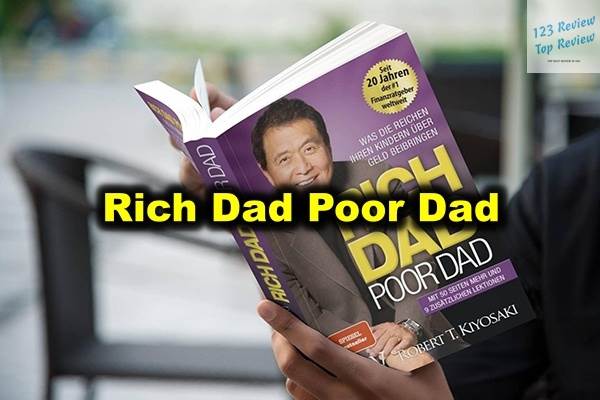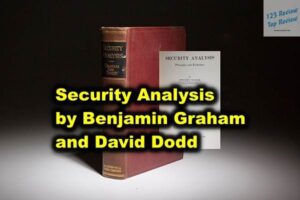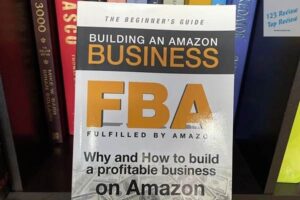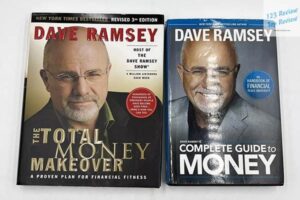“Rich Dad Poor Dad book” contrasts the financial philosophies of Kiyosaki’s two father figures: his biological father, the “Poor Dad,” and his best friend’s father, the “Rich Dad.” Through this comparison, Kiyosaki imparts essential lessons about money, investing, and achieving financial independence.

“Rich Dad Poor Dad,” authored by Robert T. Kiyosaki, has emerged as a seminal work in personal finance, challenging conventional wisdom and introducing readers to the fundamental principles of financial literacy. This review provides an in-depth exploration of the key concepts, comparisons, steps to financial freedom, myths, practical applications, and final thoughts derived from this influential book.
Key Concepts of the Book
The Importance of Financial Education
Kiyosaki underscores the necessity of financial education, criticizing the traditional educational system for its lack of emphasis on financial literacy. He argues that schools prepare students to be employees rather than entrepreneurs or investors. Financial education, according to Kiyosaki, is the cornerstone of financial freedom. It empowers individuals to understand money management, investment strategies, and the principles of wealth creation.
Differences Between Assets and Liabilities
A central tenet of “Rich Dad Poor Dad” is understanding the difference between assets and liabilities. Kiyosaki defines assets as anything that puts money in your pocket, such as rental properties, stocks, and businesses. Liabilities, on the other hand, are things that take money out of your pocket, like mortgages, car loans, and credit card debt. This distinction is crucial because it shifts the focus from earning a high income to building a portfolio of income-generating assets.
The Mindset of the Rich vs. the Poor
Kiyosaki explores the divergent mindsets of the rich and the poor. The rich prioritize acquiring assets and making their money work for them, while the poor often focus on earning a salary and spending on liabilities. The rich view money as a tool for creating wealth, whereas the poor see it as a means to cover expenses. This mindset difference influences financial behavior and outcomes.
The Lessons From Rich Dad
Lesson 1: The Rich Don’t Work for Money
One of the most profound lessons from “Rich Dad” is that the rich do not work for money; instead, they make money work for them. This involves investing in assets that generate passive income, allowing individuals to earn without actively working. Kiyosaki emphasizes the importance of building and acquiring assets that provide ongoing revenue streams, reducing dependence on a paycheck.
Lesson 2: Why Teach Financial Literacy?
“Rich Dad” advocates for financial literacy, highlighting its importance in making informed decisions about money. Kiyosaki believes that understanding financial statements, investment strategies, and market trends is essential for achieving financial independence. He encourages readers to educate themselves continually and to seek knowledge beyond what is taught in traditional schools.
Lesson 3: Mind Your Own Business
Kiyosaki advises readers to focus on building their own business or investments rather than solely relying on their job. This means investing time and resources into creating and growing income-generating ventures. “Minding your own business” involves taking control of your financial destiny and not being overly dependent on an employer.
The Philosophy of Poor Dad
The Limitations of Job Security
The “Poor Dad” philosophy places a high value on job security and the traditional career path. However, Kiyosaki points out that this approach is limiting. Job security is often an illusion, and relying solely on a paycheck can hinder financial growth. “Poor Dad” represents the conventional wisdom of getting a good education, finding a stable job, and climbing the corporate ladder, but this path does not necessarily lead to financial independence.
The Role of Fear in Financial Decisions
Fear plays a significant role in the financial decisions of the poor. Fear of losing money or making wrong investment choices often leads to conservative and risk-averse behavior. This fear can prevent individuals from taking the necessary risks to grow their wealth. Kiyosaki argues that overcoming this fear is essential for financial success.
The Traditional Path to Success
“Poor Dad” believes in the traditional path to success, which involves excelling academically, securing a high-paying job, and saving money. While this path can lead to a comfortable life, Kiyosaki suggests it does not provide the financial freedom that comes from building and controlling one’s own wealth.
Overcoming Financial Obstacles
Identifying Personal Fears
To overcome financial obstacles, it is crucial to identify and address personal fears related to money and investing. Fear of failure, fear of losing money, and fear of the unknown can all hinder financial growth. Kiyosaki encourages readers to confront these fears head-on and to adopt a mindset that views failures as learning opportunities.
Common Cynicisms About Wealth
Cynicism about wealth often stems from misconceptions and negative beliefs about money. Common cynicisms include the belief that money is the root of all evil or that wealth can only be achieved through unethical means. Kiyosaki challenges these beliefs, advocating for a positive and proactive approach to wealth creation.
Developing Healthy Financial Habits
Developing healthy financial habits is essential for achieving long-term financial success. This includes budgeting, saving, investing, and avoiding unnecessary debt. Kiyosaki emphasizes the importance of discipline and consistency in managing finances. He advises readers to track their income and expenses diligently and to prioritize investing in assets over spending on liabilities.
Practical Steps for Financial Growth
Creating Income-Generating Assets
One of the most practical steps toward financial growth is creating income-generating assets. This can include investing in real estate, stocks, bonds, and starting a business. Kiyosaki highlights the importance of diversifying income sources to reduce risk and increase financial stability. He encourages readers to focus on building a portfolio of assets that provide steady and reliable income streams.
Importance of Continuous Learning
Continuous learning is a key factor in staying informed about financial trends and opportunities. Kiyosaki advocates for lifelong learning, urging readers to educate themselves about financial management, investment strategies, and market dynamics. This can involve reading books, attending seminars, and seeking advice from financial experts.
Leveraging Financial Intelligence
Leveraging financial intelligence involves using knowledge and skills to make informed financial decisions. This includes understanding market trends, tax laws, and investment strategies. Kiyosaki stresses the importance of being financially savvy and proactive in managing money. By leveraging financial intelligence, individuals can maximize returns on investments and minimize financial risks.
Conclusion: Is Rich Dad Poor Dad Worth Reading?
Strengths of the Book
“Rich Dad Poor Dad” offers invaluable insights into financial independence and wealth-building strategies. Its straightforward language and relatable anecdotes make complex financial concepts accessible to a broad audience. The book’s emphasis on financial education, mindset, and practical steps for wealth creation is both empowering and motivational.
Weaknesses of the Book
Despite its strengths, some critics argue that the book oversimplifies financial concepts and lacks concrete action plans. The anecdotal nature of the book may not resonate with all readers, and some of Kiyosaki’s advice may be considered risky or unconventional. Additionally, the book’s focus on real estate and entrepreneurship may not be applicable to everyone’s financial situation.
Final Thoughts on Financial Independence
Overall, “Rich Dad Poor Dad” is a thought-provoking and influential read that challenges conventional views on money and success. It encourages readers to take control of their financial future and provides a foundation for developing a wealth-building mindset. By following the principles outlined in the book, individuals can gain a better understanding of financial independence and take practical steps toward achieving it. Whether you are a novice or seasoned investor, “Rich Dad Poor Dad” offers valuable lessons that can transform your approach to money and wealth.





